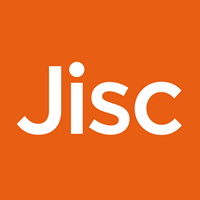O Direito Civil em ‘Rosaura, a enjeitada’ de Bernardo Guimarães: “[...] problema eterno e insolúvel [...]”
Resumo
O objetivo central deste artigo é compreender como Bernardo Guimarães, na obra ‘Rosaura, a enjeitada’, apresentou aspectos do Direito Civil no Brasil do século XIX. Para tanto levaremos em conta a trama dos personagens e a formação jurídica do autor, na Faculdade de Direito de São Paulo. Neste sentido, indagamos: Por que o Direito Civil é tramado como ‘um problema eterno e insolúvel’ em relação à escravidão do século XIX no Brasil? Como o autor apresenta seus argumentos para defender tal tese? A problemática central circunscreve em torno do entendimento de que os estudantes ocupavam um lugar social que possibilitava a produção de diversos escritos (memórias, teses, jornais acadêmicos, romances, poesias, entre outros), que versavam sobre temas pertencentes ao Brasil imperial, especialmente a escravidão. Para alcançar o objetivo proposto, operamos como metodologia de pesquisa histórica de análise da obra literária interrogando e problematizando o documento. Neste artigo, para mobilizar o objeto recorremos ao conceito de repertório, nos termos de Alonso (2002). Esse conceito serviu como uma lupa para a análise da obra em foco. Por fim, evidenciamos que o literato usou do artifício da escrava nascida livre para tratar da escravidão e do Direito Civil, mostrando como a personagem ‘Rosaura’, vítima do sistema escravista, poderia ser restituída ao lugar de livre, das mazelas da escravidão que sofrera desde o nascimento. O autor mobilizou repertórios de cultura jurídica adquiridos no lócus intelectual da Faculdade de Direito de São Paulo. Assim, dentro de uma análise geral da narrativa, as expressões do direito aparecem como elementos sociais e jurídicos, usados não apenas como uma mera elucidação. Certamente, havia seletividade e intencionalidade para noticiar os conteúdos das leis no Brasil.
Downloads
Referências
Adorno, S. (1988). Os aprendizes do poder. Rio de Janeiro, RJ: Paz e Terra.
Alonso, A. (2002). Ideias em movimento: a geração de 1870 na crise do Brasil Império. São Paulo, SP: Paz e Terra.
Brasil. (1830). Lei de 16 de dezembro de Código criminal do império do Brazil. Recuperado de http://www.planalto.gov.br/ccivil_03/leis/lim/LIM–16–12–1830.htm.
Chalhoub, S. (2012). A força da escravidão: ilegalidade e costume no Brasil oitocentista (2a. ed.). São Paulo, SP: Companhia das Letras.
Galvão, A. M. O, & Lopes, E. M. T. (2010). Território plural: a pesquisa em história da Educação. São Paulo, SP: Ática.
Guimarães, J. B. (n.d.). Rosaura, a enjeitada (v. 1). [S.l.]: Coleção Saraiva.
Guimarães, J. B. (n.d.). Rosaura, a enjeitada (v. 2). [S.l.]: Coleção Saraiva.
Holanda, S. B. (2015). Raízes do Brasil. São Paulo, SP: Companhia das Letras.
Le Goff, J. (1994). Documento/Monumento. In J. Le Goff (Ed.), História e memória (3a. ed., p. 525–541). Campinas, SP: Unicamp.
Malheiros, A. M. P. (1866). A escravidão no Brasil: ensaio histórico–jurídico–social (Vol. 1). Rio de Janeiro, RJ: Centro Edelstein.
Mesquita, I. M. (2015). Presenças e ausências de referências sobre escravismo e educação nas teses e dissertações da Academia de Direito de São Paulo (1830–1880). In V. L. Nogueira (Org.), População negra, escravismo e educação no Brasil: séculos XIX e XX (p. 69–98). Belo Horizonte, MG: Mazza.
Mota, C. G. (2006). Os juristas na formação do estado–nação brasileiro: século XVI a 1850. São Paulo, SP: Quartier Latin.
Nascimento, D. C., Damasceno, F. G., & Bernardo, M. S. (2012). Batismo e o compadrio de escravos: os diversos laços de compadrio na freguesia de Nossa Senhora do Rosário de Mambucaba, 1850–1871. In Anais do XV Encontro Regional de História – ANPUH–Rio Ofício do Historiador: Ensino e Pesquisa (p. 1–7). Rio de Janeiro, RJ.
Santos, G. (2015). Academia de Direito de São Paulo: cultura jurídica e política na formação dos bacharéis (1850–1870) (Dissertação de Mestrado). Universidade Tiradentes, Aracaju.
Vasconcellos, M. C. R. (2006). Famílias escravas em Angra dos Reis, 1801–1888 (Tese de Doutorado). Universidade de São Paulo, São Paulo.
This work is licensed under a Creative Commons Attribution 4.0 International License.
DECLARAÇÃO DE ORIGINALIDADE E DIREITOS AUTORAIS
Declaro que o presente artigo é original, não tendo sido submetido à publicação em qualquer outro periódico nacional ou internacional, quer seja em parte ou em sua totalidade.
Os direitos autorais pertencem exclusivamente aos autores. Os direitos de licenciamento utilizados pelo periódico é a licença Creative Commons Attribution 4.0 (CC BY 4.0): são permitidos o compartilhamento (cópia e distribuição do material em qualquer suporte ou formato) e adaptação (remix, transformação e criação de material a partir do conteúdo assim licenciado para quaisquer fins, inclusive comerciais).
Recomenda-se a leitura desse link para maiores informações sobre o tema: fornecimento de créditos e referências de forma correta, entre outros detalhes cruciais para uso adequado do material licenciado.















































